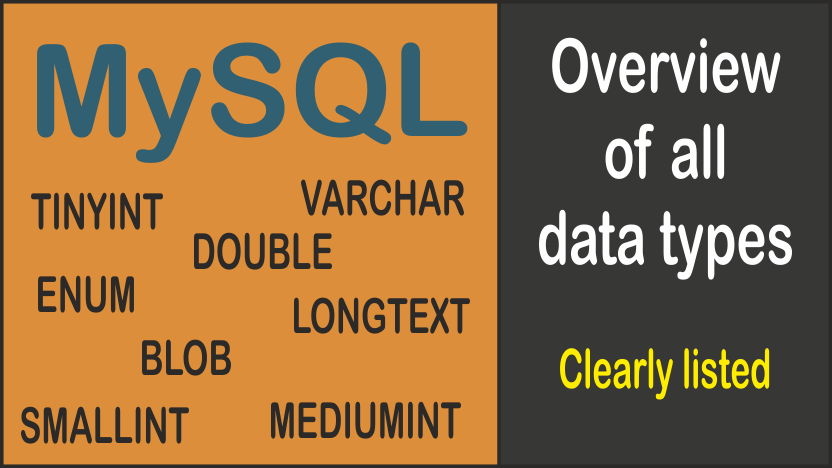

You can learn more about them here: MySQL BIT data type explained MySQL ENUM data type explained The TINYINT is the default alias for BOOLEAN type as defined by MySQL, but. Aside from the TINYINT type, MySQL administrators may also use either the BIT or ENUM type for storing boolean values. If we are talking about true or false then it is clear that data type should be boolean. And that’s how the BOOLEAN type is used in MySQL. Note − The only basic difference is in semantics. Mysql> insert into tinyint1Demo values(1) The following is the output that displays Boolean TRUE.Ĭreating a table with tinyint(1) data type. Mysql> insert into BooleanDemo values(true) On the other hand, MySQL provides BOOLEAN or. It is up to us which data type we want to use- values can be 1 and 0 or true and false. MySQL uses TINYINT(1) instead of boolean as it doesnt have a built-in boolean type. If we say that we need true or false values then Boolean comes to our mind, instead of tinyint(1). Standard SQL doesn't support this use of booleans as integers, and would require the more verbose: SELECT COUNT(CASE name WHEN 'bill' THEN 1 END) FROM table Īs other answers have already noted, you can use a data type alias BOOL but it is immediately replaced by TINYINT(1) (MySQL does something similar with other data types, like REAL and SERIAL).The basic difference between Boolean and tinyint(1) is only in the naming convention. Colums defined as BOOLEAN or TINYINT(1) can store 1 or 0 integer values. This does mean that certain expressions are simpler in MySQL, such as counting the rows where a certain value is true is as easy as SUM() of a boolean expression, which will be 1 where the condition is true and 0 otherwise. MySQL supports the BOOLEAN type name as an alias for the built-in TINYINT(1) data type.

in case you want to use Only 1 or 0 then you can use this method: CREATE TABLE SampleBit( bar int NOT NULL CONSTRAINT CKfoobar CHECK (bar IN (-1, 0, 1)) ) But I will strictly advise BIT as The BEST Option. which will provide you with True or False Value options. They really are mapped to integers: mysql> SELECT true + 10 In SQL Server Management Studio of Any Version, Use BIT as Data Type. It does support the keywords true and false, but these are mapped to the integer values. It uses integer values 1 and 0 respectively for true and false. MySQL considered value zero as false and non.
BOOLEAN MYSQL DATA TYPE HOW TO
In this guide, we will discuss the most common data types available in MySQL, the different input and output formats they use, and how to configure various fields to meet your applications' needs.
BOOLEAN MYSQL DATA TYPE CODE
Many find it better to work with 0 and 1 as values for insert such that it is explicitly clear what you are trying to do in the code (i.e. MySQL includes a wide range of data types that are used to label and validate that values conform to appropriate types. They provide a TINYINT data type instead of Boolean or Bool data types. Note that BOOL, BOOLEAN field types in MySQL are really just aliases for TINYINT(1). MySQL does not contain built-in Boolean or Bool data type. To facilitate the use of code written for SQL implementations from other vendors, MySQL maps data types as shown in the following table. It can always use to get a confirmation in the form of YES or No value. The web2py adapter converts boolean to char(1) but in MySQL the specification is that boolean is stored as tinyint with 0 and 1. MySQL doesn't support true booleans as per standard SQL. A Boolean is the simplest data type that always returns two possible values, either true or false.


 0 kommentar(er)
0 kommentar(er)
